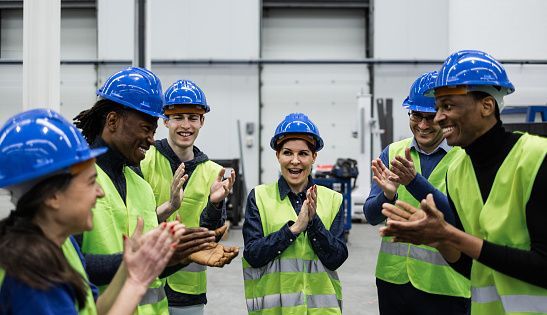Energizing Employees for Change
Cathie Leimbach • December 10, 2024

Let's talk about the third E in the “Three Es of Effective Change”: Energize.
Think of it like this. You want to climb a really big mountain. It's going to be tough, right? You need a lot of energy to get to the top. And just like summiting that mountain, transforming a whole company is a big challenge.
So, how do you get your team energized and ready to climb that mountain?
- Well, first, you've got to be clear about where you're going and why it's important. Tell them the big picture, the vision. Explain why this change is going to make things better for everyone.
- Next, make sure everyone knows their role in this journey. Show them how their work fits into the bigger puzzle. This will help them feel like they're making a difference.
- But talking isn't enough. You need to listen too. Have open conversations with your team. Let them share their thoughts and concerns. This will help you understand their perspective and make sure they feel heard.
- Finally, give your managers the tools they need to inspire their teams. Train them on how to communicate effectively and motivate their people.
Remember, when everyone feels energized and involved, it's a lot easier to climb that mountain – or implement a major change in your organization. It's like having a whole bunch of cheerleaders cheering each other on!
In most organizations, the instinct is to add —more goals, more projects, more meetings. But as Juliet Funt, founder of the Juliet Funt Group, teaches in her Strategic Choice process, real leadership strength lies in deciding what to stop doing . Strategic Choice is the intentional narrowing of priorities—cutting away the clutter so teams can focus on what truly drives results. It’s a disciplined act of letting go: saying no to good ideas so there’s room for the great ones. Funt’s approach challenges leaders to pause, think, and create the mental and operational space their people need to perform at their best. By removing unnecessary tasks and misplaced effort, leaders make room for precision, innovation, and real thinking time. This isn’t about doing less—it’s about doing what matters most. When businesses adopt this mindset, they replace overwhelm with clarity and regain control of their time, energy, and outcomes. For small to mid-sized companies, embracing Strategic Choice can transform busyness into focus—and that focus is where sustainable growth begins. Want a quick visual overview? View Strategic Choice: Making Room for What Matters to see how this process helps leaders focus on what truly drives results.

Hey team leaders! Ever wonder why some companies soar while others stumble? Patrick Lencioni's bestseller, The Five Dysfunctions of a Team , nails it: workplace dysfunctions such as no trust, fear of conflict, lack of commitment, avoiding accountability, and ignoring results lead to mediocre performance at best. But here's the good news—smart leadership development changes the game! Start with building trust . Train leaders to open up and be vulnerable. Teams bond, ideas flow, and costly mistakes drop. Next, embrace healthy conflict . Teach team leaders to make it safe for team members to share the pros and cons of current or new ways of doing things. This helps everyone understand different perspectives. Then, drive commitment . Leaders who clarify goals, ask everyone to share their level of buy-in, and address their concerns get everyone bought in. People focus on high value work and get more done. . Hold folks accountable through coaching. Leaders learn to give kind, direct feedback by praising good work and calmly providing more training as needed. Turnover plummets and the quality and quantity of work improves. Finally, focus on results . Be clear on expectations. Keep score by monitoring progress weekly or daily. Acknowledge team wins when the goals are met. Winning sports teams pay attention to these Five Behaviors of a Team. How would a World Series winner have been determined this week without trust among the players and coaches, openness to tough coaching, the whole team working together, players focusing on their specific positions, and getting players around the bases to get the top score? Every workplace can benefit from these team behaviors as well. Lencioni's research proves it: Companies who prepare their leaders to overcome these 5 common workplace dysfunctions, improve the culture and see huge financial gains. Invest in your leaders today. Your bottom line will thank you! Click here to learn more about the painful cost of team dysfunction.
